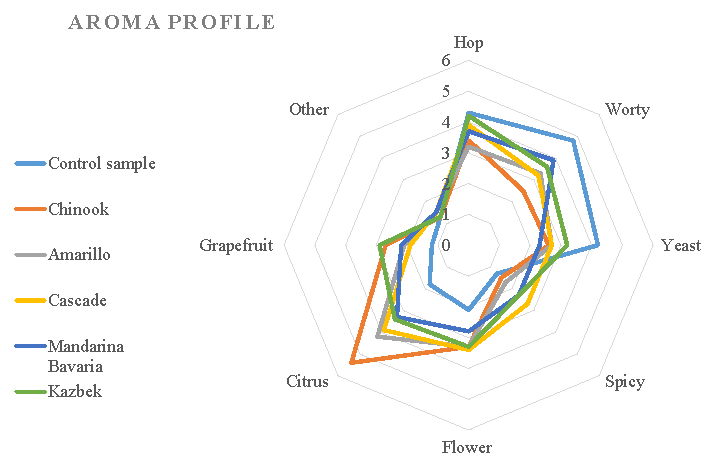A comparison of sensory evaluation and an electronic nose assay in the assessment of aroma in dry hopped beers
DOI:
https://doi.org/10.18832/kp2020.66.224Keywords:
Beer, Dry Hopping, Electronic Nose, HopsAbstract
The aim of this work was to compare sensory evaluation and electronic nose technology used to assess aromas in dry hopped beers. An electronic nose based on gas chromatography was used for the first time. Hops varieties Amarillo, Cascade, Chinook, Kazbek and Mandarina Bavaria were used for the production of dry hopped beers and the Sladek variety was used for the control sample. The basic characteristics of the beers were determined, and the sensory evaluation performed by selected assessors was compared to the sensory assay using an electronic nose. Assessment of the aroma profile of dry hopped beers shows that the basic flavours of these beers, such as worty, yeasty and hoppy, were suppressed. Compared to the control sample, a significant grapefruit flavour was noted by the evaluators in Kazbek and Chinook beer samples. The most prominent determinant, compared to the control sample, was in general the citrus aroma. Based on the results of the principal component analysis, it can be concluded that there were statistically significant differences between the individual dry hopped beers and between them and the control sample with the exception of beers dry hopped with hops of the Amarillo and Cascade variety, which was also confirmed by the results of sensory evaluation (approximately the same scoring of the monitored descriptors).








